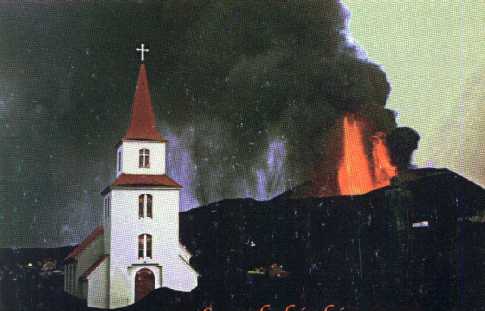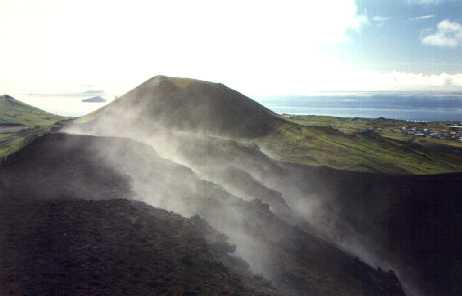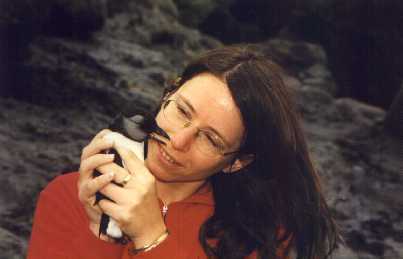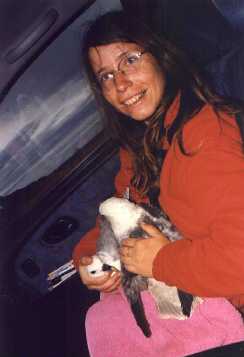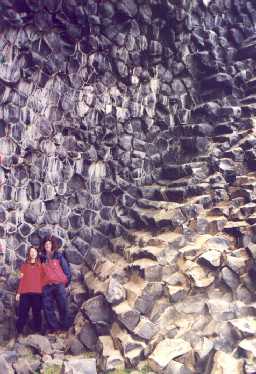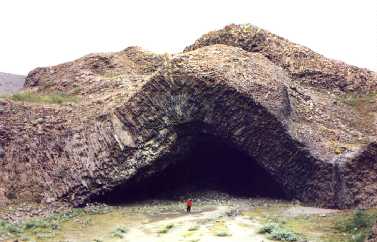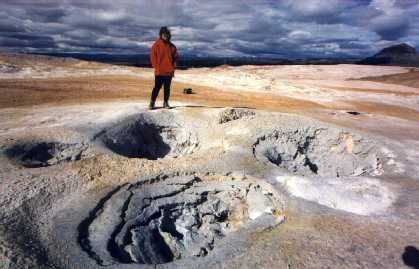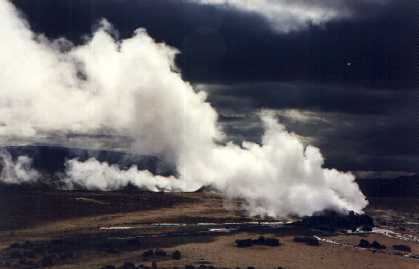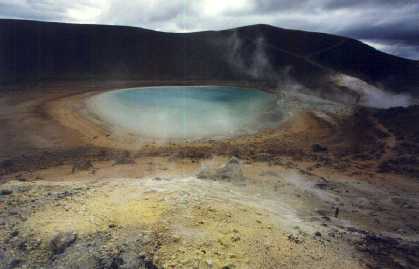Iceland is a relatively new island which was formed due to volcanic activity. Actually the island is growing steadily with time. Generally speaking, the Icelanders attitude toward geothermal activity is something between indifference and hostility. This surprises us. More than 90% of water heating in Iceland is done by geothermal heating plants. This means that hot water is in practice for free. That explains for instance the fact that almost all heated swimming pools in Iceland are indoors, but set in the open air. Some farmers have in their backyard a private geyser which they use as a geothermal dynamo for the fabrication of electricity. So for these farmers also the electricity is for free... The only drawback we find in the hot water system in Iceland is that because of the geothermal heating the water smells of sulfur. As the water tap for hot and cold water is the same, if you want to drink cold water after using hot water, you need to leave the cold water running for 10 seconds, in order to wash away the remnants of sulfur...

A church inside a crater of a dormant volcano.

